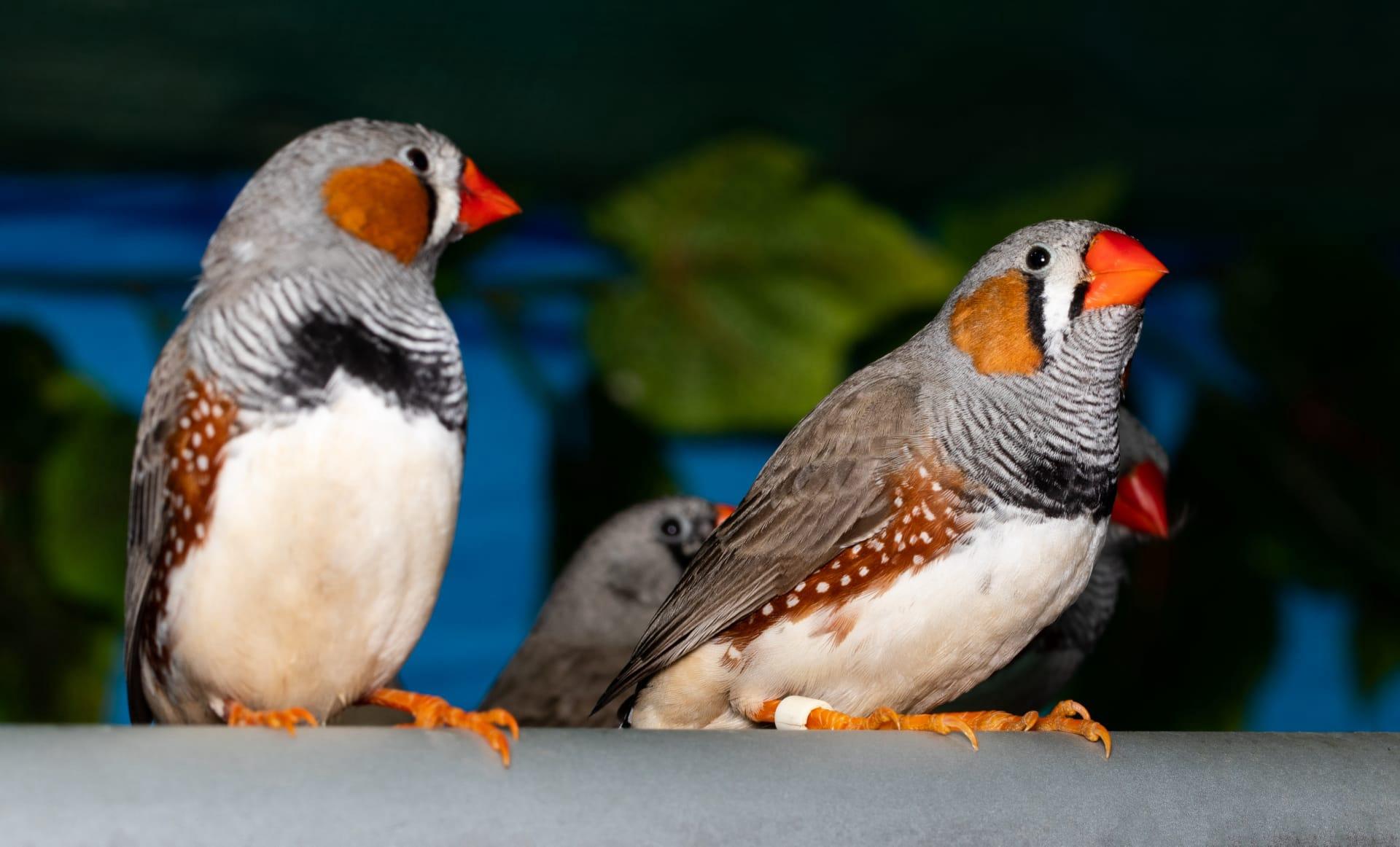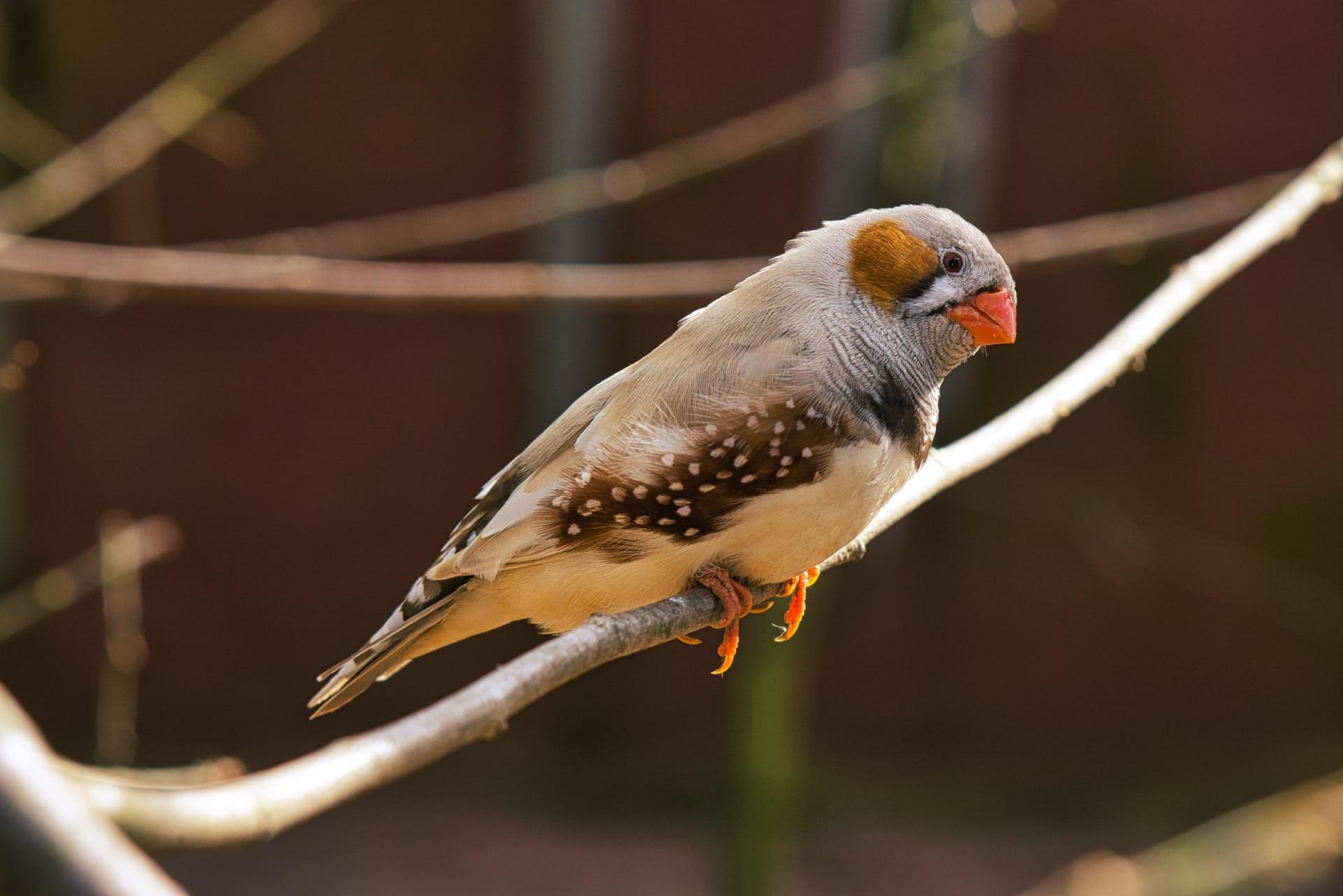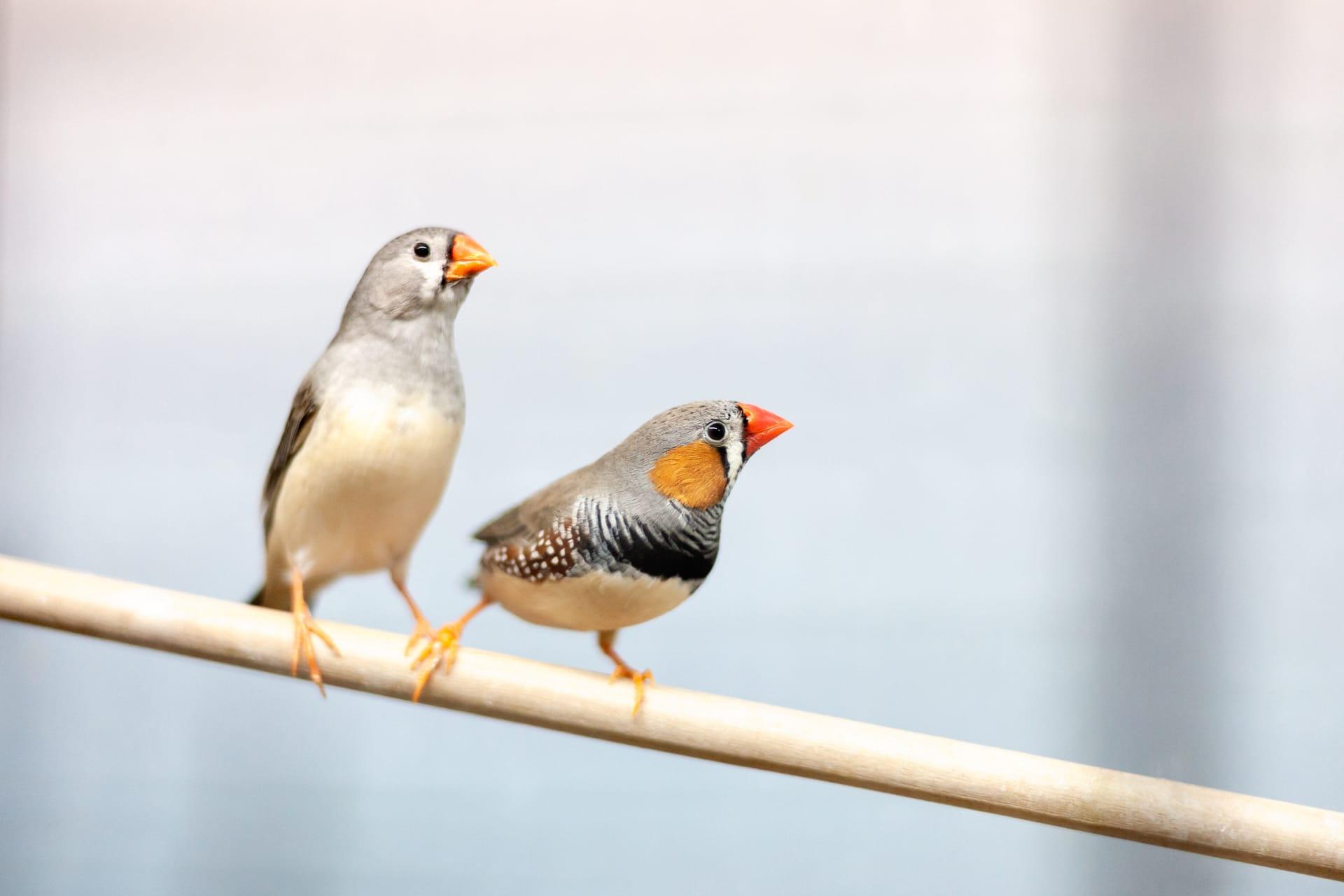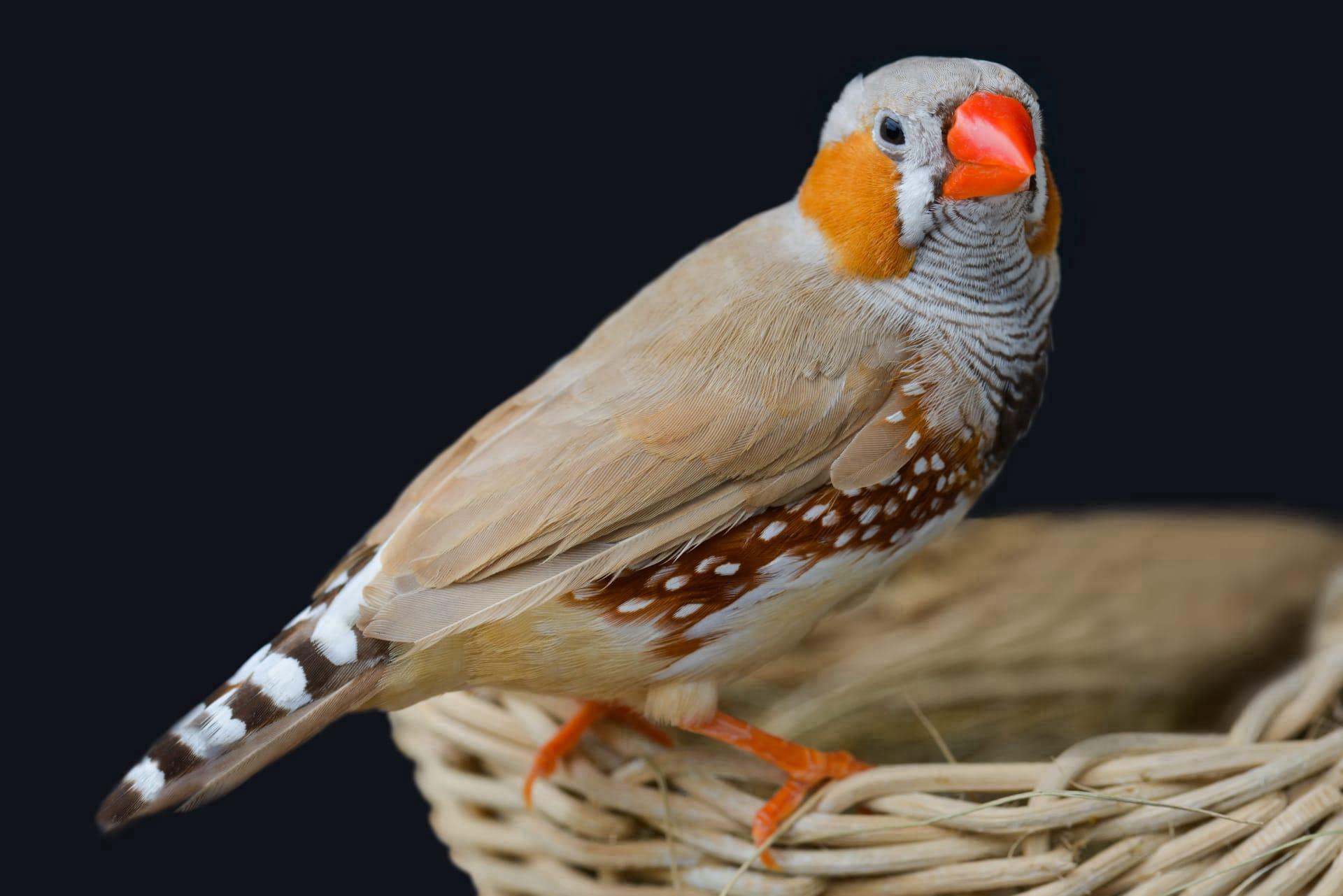1
Zebra finches are renowned for their robust singing ability, especially the males who use their melodic skills to woo females. What's fascinating is the complexity of their songs. A male zebra finch's song can consist of up to 10 different syllables, and each bird develops a unique variation of the song he learns from his father. This personal twist to the song is like a signature, distinguishing one male from another in the social sphere.
Another interesting fact about these birds is their nesting behavior. Zebra finches are quite resourceful when it comes to building their nests. They use a variety of materials, from grass and twigs to even bits of paper and plastic if available. The nest-building process is a couple's activity, with both the male and female participating. The nests are typically about 10 centimeters in diameter, providing a cozy environment for their eggs.

2
When it comes to parenting, zebra finches are exceptional. Both parents are involved in rearing the young, which is not very common among bird species. The male primarily provides food for the female and the chicks, while the female is more involved in brooding and direct care. This cooperative parenting strategy enhances the survival rate of their offspring.
Zebra finches have an extraordinary ability to adapt their breeding to environmental conditions. They typically breed after rainfall when food resources are abundant. However, in captivity, they can breed year-round. This adaptability is a key factor in their widespread presence across various habitats. They lay an average of 4 to 6 eggs per clutch, and the eggs are incubated for about 14 days before hatching.

3
These birds have an incredible memory for songs. Research has shown that a zebra finch can remember and replicate a song it heard only once, several months earlier. This memory prowess plays a vital role in their social interactions and mating rituals. The ability to recall and reproduce songs accurately is a sign of a healthy and genetically fit male, making him more attractive to potential mates.
Interestingly, zebra finches are also known for their ability to learn from observing their peers. In experiments, when one bird learns to solve a puzzle to access food, others watching will quickly learn to do the same. This social learning is quite advanced among birds and indicates a high level of intelligence and adaptability in zebra finches.

4
Did you know that zebra finches are monogamous? Once they find a mate, they tend to stick with them for life. This strong pair bond is evident in their behavior; they often sit closely together and engage in mutual grooming. This lifelong partnership is quite rare in the bird world and adds an endearing quality to these creatures.
Another intriguing aspect of zebra finches is their reaction to environmental stressors, particularly in terms of their offspring. When exposed to stressful conditions, zebra finches lay smaller eggs with a higher yolk-to-albumen ratio. This adaptation potentially provides their chicks with more nutrients needed to survive in a challenging environment, showcasing a remarkable level of parental foresight and adaptability.

5
Zebra finches are also remarkable for their longevity, especially in captivity. While the average lifespan in the wild is around 5 years, in captivity, they can live up to 10 years or more. This longevity is attributed to the lack of predators, controlled diet, and generally stable living conditions in captivity.
Finally, zebra finches have a unique way of keeping cool in hot environments. They engage in a behavior called 'gular fluttering', where they rapidly vibrate the muscles in their throat. This movement increases air circulation through the throat, helping to dissipate heat and regulate their body temperature. This adaptation is crucial for their survival in the hot, arid habitats they often inhabit.